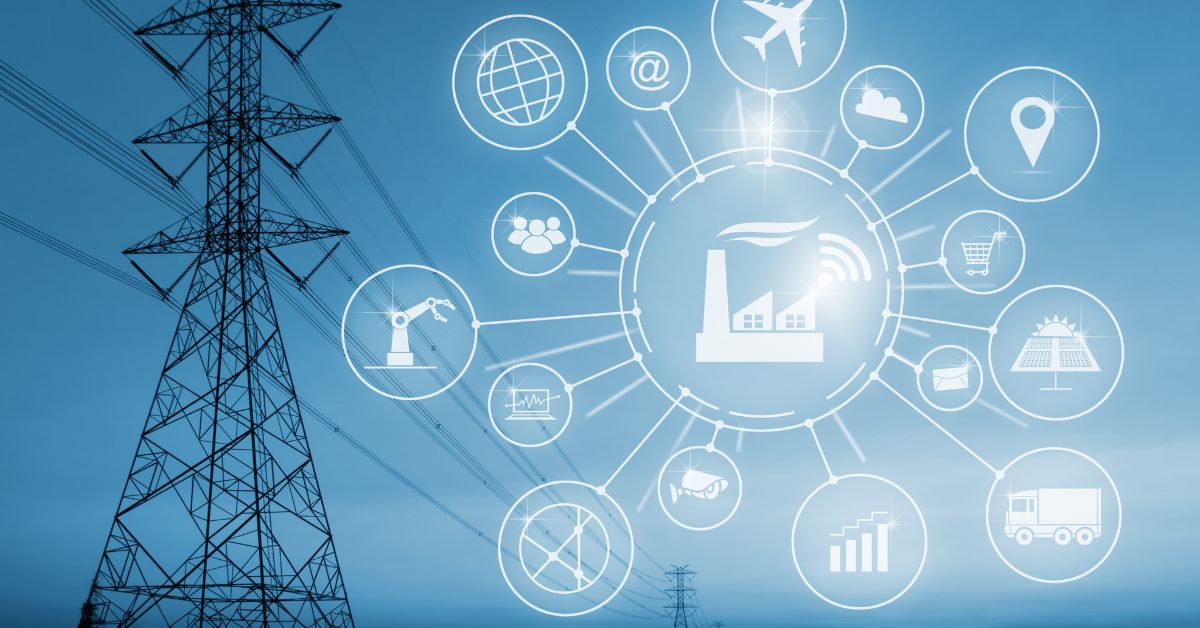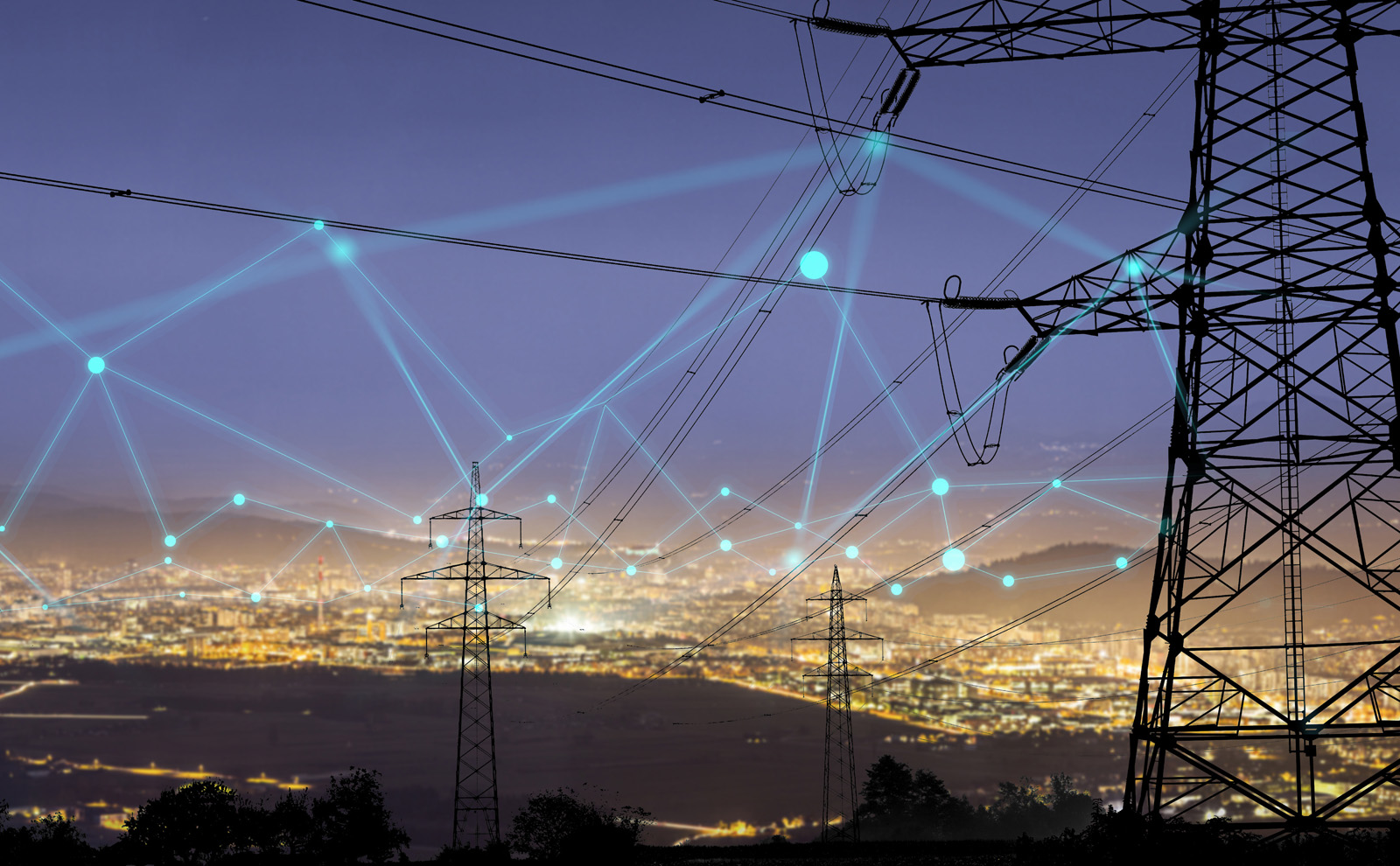India’s traditional power infrastructure is changing in a big way because cities are growing quickly, technology is taking over, and the demand for electricity is rising. Smart Grid Technology is at the centre of this change. It is an integrated, digital framework that is changing how electricity is made, sent out, and used. Smart grids are more than just a technology update; they are a key part of India’s sustainable energy future. They will make the grid more stable and use less energy.
One of the best engineering businesses in this field is helping to make this change happen by coming up with new ideas and modernising the grid. This company is a leader in digital power infrastructure and energy innovation.
This article looks at how smart grid power systems are changing the way power is distributed in India, the benefits they provide, the problems that come up when they are put into use, and the part that technology suppliers play in creating the country’s digital energy future.
What does a Smart Grid Power System do?
A Smart Grid Power System is a high-tech electrical grid that uses digital communications, sensors, automation, and real-time data to keep an eye on and control the flow of electricity. Smart grids let utilities and consumers talk to each other, which makes power distribution more efficient, adaptable, and reliable. This is different from regular grids.

Some of the most important parts of smart grid technologies are:
- Smart meters and advanced metering infrastructure (AMI)
- Supervisory Control and Data Acquisition (SCADA) systems
- Tools for managing demand-side (DSM)
- Integrating Distributed Energy Resources (DER)
- Monitoring the grid in real time and doing repair before it breaks
These technologies work together to make a network that can repair itself, adapt to changes, handle fluctuations, stop outages, and make the best use of energy in homes, businesses, and factories.
Why India Needs Smart Grid Technology
India is the third biggest country in the world that makes and uses power. Even though the country has made a lot of progress in getting electricity and generating power, it still has problems like:
- Losses in transmission and distribution (T&D)
- A lot of problems with the grid and changes in voltage
- Load imbalance because power demand isn’t even
- Adding solar and wind power to the mix of energy sources
- Little ability to see and adjust how well the grid works
In 2015, the Indian government started the National Smart Grid Mission (NSGM) to put smart grids in cities and rural areas to help with these problems. The mission helps with trial initiatives, making policies, finding ways to fund things, and increasing the skills of utilities and other stakeholders.
India wants to make a smart energy ecosystem where energy is reliable, cheap, efficient, and long-lasting. Smart grids fit in perfectly with this vision.
Benefits of using a Smart Grid
There are many benefits to switching to smart energy solutions that use smart grid technologies.
1. Better Energy Efficiency
Smart grids cut down on T&D losses by making it possible to keep track of things accurately, predict loads, and find faults quickly. Utilities can better manage supply and demand, which cuts down on waste and overcrowding.
2. Monitoring and Finding Problems in Real Time
Smart grids use sensors and automated control systems to let you see what’s going on with the grid in real time. Faults may be found and fixed right away, which cuts down on downtime and service interruptions.
3. Better Integration of Renewable Energy
India has set an ambitious goal of achieving 500 GW of non-fossil fuel electricity capacity by 2030 under its commitments to the Paris Agreement. Remarkably, as of mid-2025, India has already achieved over 50% of its installed power capacity from non-fossil fuel sources, five years ahead of schedule.
Smart grids play a critical role in this transition by helping manage the intermittency of solar and wind power. They enable real-time balancing of supply and demand through energy storage systems, dynamic load management, and demand-response strategies, ensuring grid stability even when renewable generation fluctuates.
4. Consumers who have power
Smart meters and real-time data on how much electricity you use provide you the tools you need to keep track of and control your usage. Peak load pricing and time-of-use tariffs incentivise people to save energy.
5. How strong and reliable the grid is
Smart grid technology makes the grid more automated and responsive, which lowers the danger of blackouts and makes the system better able to handle natural disasters and cyber threats.
Smart Grid Technology in India: What Has Happened and What Is Still to Come
India has made steady progress in smart grid development through initiatives like the National Smart Grid Mission (NSGM) and RDSS.
- Puducherry was among the first to run a smart grid pilot, focusing mainly on smart metering (AMI) for 1,500 users. Contrary to earlier reports, it did not include full-scale outage management or demand response systems.
- Chandigarh is part of the national smart meter rollout but has not yet achieved 100% smart metering.
- Kerala State Electricity Board (KSEB) is deploying smart meters and improving grid automation, though a fully automated smart grid is still underway.
Even with the improvements, there are still a number of obstacles to the widespread use of smart grids:
Main Problems:
- High costs and a long time to pay them back
- Problems with integrating old infrastructure
- No skilled workers or technological training
- Worries about cybersecurity
- Difficulties with rules and readiness of utilities
Giving India’s digital power future the tools it needs
One of the forward-thinking companies that is helping to make this change is a leader in power infrastructure that has successfully built over 350 substations across India, which is helping to modernise the grid on a huge scale.
They are working on:
- Smart Metering Infrastructure: This helps utilities keep track of energy use and bill customers more accurately.
- IoT-Based Automation: Putting SCADA and real-time monitoring systems in all substations and distribution networks.
- Renewable Grid Integration: Making unique smart energy solutions for solar plants and hybrid renewable systems that are connected to the grid.
With a strong focus on sustainability, innovation, and customer satisfaction, the company is enabling power utilities, discoms, and large industries to embrace smart grid technology in India.
The Path Ahead
Decarbonisation, decentralisation, and digitisation are quickly transforming India’s energy sector. Smart grid power systems aren’t simply a trend; they’re a vital step forward to satisfy the energy needs of a growing population, more metropolitan areas, and commitments to fight climate change.
To get the most out of smart grids, people need to work together. This includes:
- Strong partnerships between the public and private sectors
- Building capacity and developing the workforce
- Support for policies and rules
- Putting money into research and development and the growth of local technology
The government’s ongoing drive through programs like the Revamped Distribution Sector Scheme (RDSS), NSGM, and Make in India would speed up the adoption and upgrading of smart grids all around the country.
Final Thoughts
Smart grids are not just a modernization of the existing systems. Smart grids, digitalization in energy, natural gas, water, and many other sectors mean a radical transformation of the way we create, consume, transmit, store, measure, and manage electricity together. And for a nation experiencing record energy demands on a daily basis like India, transformation is no longer optional, it is critical and unavoidable.
India has an opportunity to spearhead climate-resilient infrastructure development through smart grid power technologies, while improving energy security and providing great income and wealth opportunities.
Hartek is fully positioned and engaged in that pivotal transformation. Boasting a successful record in the field, a preeminent vision, alongside equipped with an unparalleled collection of industry insight, knowledge and experience. Hartek Group is helping to power that transformation, one smart, reliable, and future-ready grid solution at a time. From urban metropolitan centers to rural outposts, Hartek is ready, able and willing to help create clean, connected energy for all. It’s not just about creating better infrastructure, but it’s about creating a better and connected future for India.
FAQ’s:-
1. What is a Smart Grid Power System?
A Smart Grid Power System is a modern, digital electricity network using real-time data, sensors, and automation for efficient and reliable power distribution.
2. Why is Smart Grid Power System important for India?
India needs Smart Grid Power Systems to reduce energy losses, stabilize voltage, support renewable energy, and modernize its growing power infrastructure.
3. How do Smart Grid Power Systems support renewable energy?
They balance demand and supply by integrating solar and wind power through real-time monitoring, energy storage, and demand-response technologies.
4. What are the key benefits of Smart Grid Power Systems?
Improved efficiency, lower transmission losses, enhanced reliability, renewable integration, and empowered consumers through smart metering are key benefits.
5. What challenges does India face in adopting Smart Grid Power Systems?
Major challenges include high costs, legacy infrastructure, lack of skilled workforce, cybersecurity risks, and regulatory readiness for smart grid deployment.





